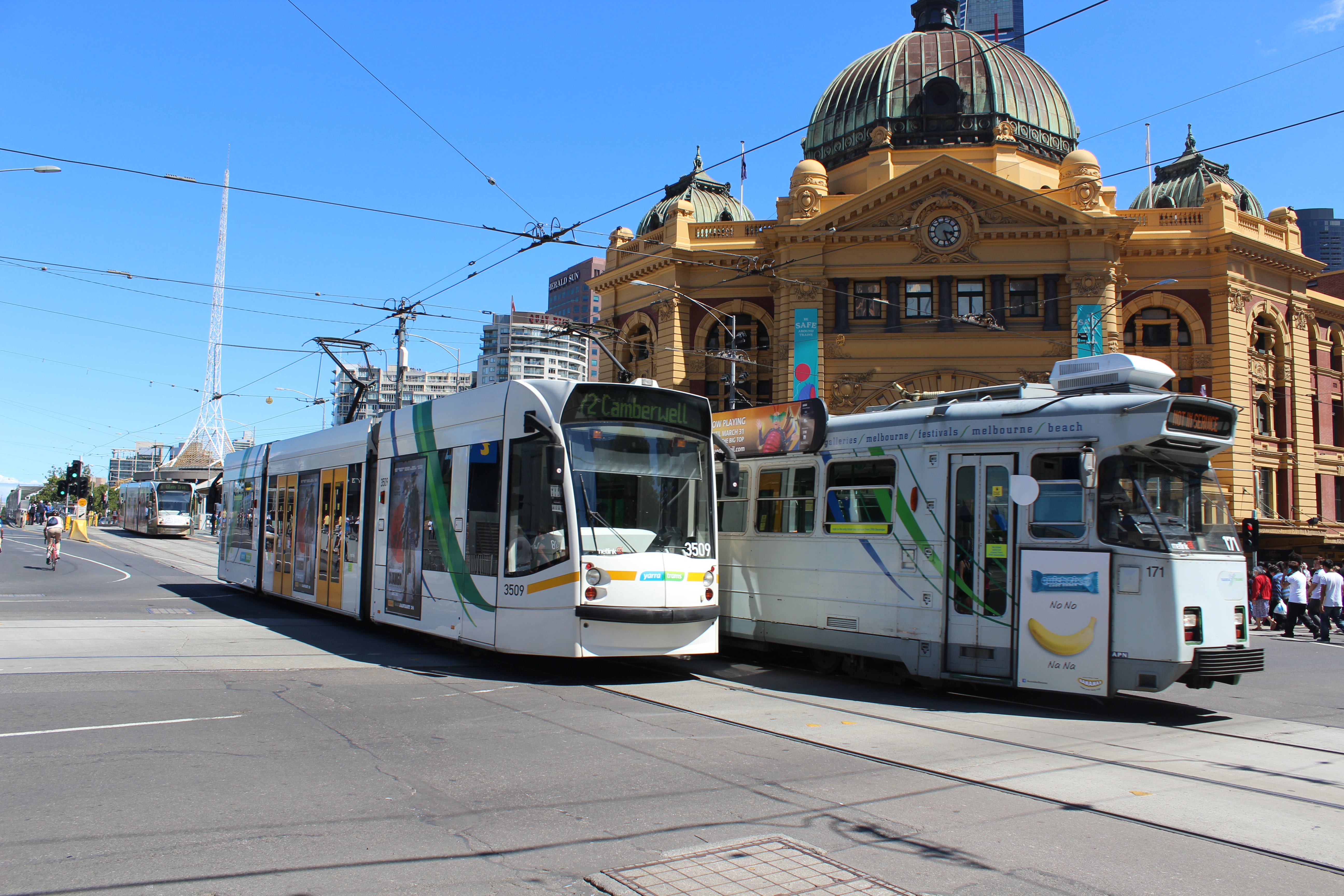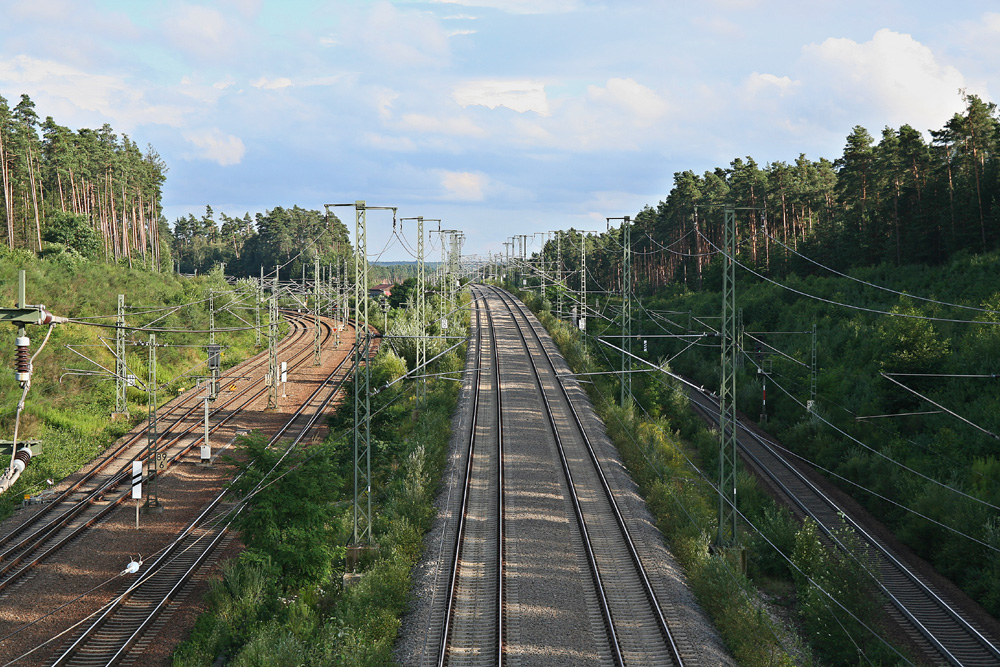|
Mørke Railway Station
Mørke station is a railway station serving the railway town of Mørke on the peninsula of Djursland in Jutland, Denmark. The station is located on the Grenaa railway line between Aarhus and Grenaa. It opened in 1877 with the opening of the Aarhus-Ryomgård section of the railway line. Since 2019, the station has been served by the Aarhus light rail system, a tram-train network combining tram lines in the city of Aarhus with operation on railway lines in the surrounding countryside. History The station opened on 1 December 1877 as the railway company Østjyske Jernbane (ØJJ) opened a branch line From Aarhus to Ryomgård on the Grenaa Line, Randers-Ryomgaard-Grenaa Line from Randers to Grenaa. Just a few years later the trains starting running directly between Grenaa and Aarhus, with the Ryomgård-Randers section being reduced to a branch line used mostly for rail freight transport until it was closed altogether on 2 May 1971. From 2016 to 2019, the station was temporarily close ... [...More Info...] [...Related Items...] OR: [Wikipedia] [Google] [Baidu] |
Railway Station
Rail transport (also known as train transport) is a means of transport using wheeled vehicles running in railway track, tracks, which usually consist of two parallel steel railway track, rails. Rail transport is one of the two primary means of land transport, next to road transport. It is used for about 8% of passenger and rail freight transport, freight transport globally, thanks to its Energy efficiency in transport, energy efficiency and potentially high-speed rail, high speed.Rolling stock on rails generally encounters lower friction, frictional resistance than rubber-tyred road vehicles, allowing rail cars to be coupled into longer trains. Power is usually provided by Diesel locomotive, diesel or Electric locomotive, electric locomotives. While railway transport is capital intensity, capital-intensive and less flexible than road transport, it can carry heavy loads of passengers and cargo with greater energy efficiency and safety. Precursors of railways driven by human or an ... [...More Info...] [...Related Items...] OR: [Wikipedia] [Google] [Baidu] |
Tram-train
A tram-train or dual-system tram is a type of light rail vehicle that both meets the standards of a light rail system, and also national mainline standards. Tramcars are adapted to be capable of running on streets like an urban tramway but also be permitted operation alongside mainline trains. This allows services that can utilise both existing urban light rail systems and mainline railway networks and stations. It combines the urban accessibility of a tram or light rail with a mainline train's greater speed in the suburbs. The modern tram-train concept was pioneered by the German city of Karlsruhe in the late 1980s, resulting in the creation of the Karlsruhe Stadtbahn. This concept is often referred to as the Karlsruhe model, and it has since been adopted in other cities such as Mulhouse in France and in Kassel, Nordhausen and Saarbrücken in Germany. An inversion of the concept is a train-tram – a mainline train adapted to run on-street in an urban tramway, also know ... [...More Info...] [...Related Items...] OR: [Wikipedia] [Google] [Baidu] |
List Of Railway Stations In Denmark
This article shows a list of railway stations and railway halts in Denmark. List See also * Rail transport in Europe * Transportation in Denmark * Rail transport in Denmark The rail transport system in Denmark consists of of railway lines, of which the Copenhagen S-train network, the main line Helsingør-Copenhagen-Padborg (at the Denmark–Germany border, German border), and the Lunderskov-Esbjerg line are railwa ... References {{Authority control da:Stednavneforkortelse ... [...More Info...] [...Related Items...] OR: [Wikipedia] [Google] [Baidu] |
DSB (railway Company)
DSB, an abbreviation of ''Danske Statsbaner'' (, ''Danish State Railways''), is the largest Danish train operating company. It's also the largest train operating company in Scandinavia. While DSB is responsible for passenger train operation on most of the Danish railways, goods transport and railway maintenance are outside its scope. DSB runs a commuter rail system, called the S-train, in the area around the Danish capital, Copenhagen, that connects the different areas and suburbs in the greater metropolitan area. Between 2010 and 2017, DSB operated trains in Sweden. DSB was founded in 1885, when the state-owned companies ''De jysk-fynske Statsbaner'' and ''De sjællandske Statsbaner'' merged. DSB was established in 1885, after the state in 1867 under the name De Jutland-Fynske Statsbaner took over the private company Det Danske Jernbanedriftselskab and in 1880 they also took over the privately owned Zealand Railway Company. History The first railways in Denmark were built a ... [...More Info...] [...Related Items...] OR: [Wikipedia] [Google] [Baidu] |
Architect
An architect is a person who plans, designs, and oversees the construction of buildings. To practice architecture means to provide services in connection with the design of buildings and the space within the site surrounding the buildings that have human occupancy or use as their principal purpose. Etymologically, the term architect derives from the Latin , which derives from the Greek (''-'', chief + , builder), i.e., chief builder. The professional requirements for architects vary from location to location. An architect's decisions affect public safety, and thus the architect must undergo specialised training consisting of advanced education and a ''practicum'' (or internship) for practical experience to earn a Occupational licensing, license to practice architecture. Practical, technical, and academic requirements for becoming an architect vary by jurisdiction though the formal study of architecture in academic institutions has played a pivotal role in the development of the p ... [...More Info...] [...Related Items...] OR: [Wikipedia] [Google] [Baidu] |
Station Building
A station building, also known as a head house, is the main building of a passenger railway station. It is typically used principally to provide services to passengers. A station building is a component of a station, which can include tracks, platforms, an overpass or underpass, and a train shed. Normally, a station building will be of adequate size for the type of service that is to be performed. It may range from a simple single-storey building with limited services to passengers to a large building with many indoor spaces providing many services. Some station buildings are of monumental proportions and styles. Both in the past and in recent times, especially when constructed for a modern high-speed rail network, a station building may even be a true masterpiece of architecture. A typical railway station building will have a side entrance hall off the road or square where the station is located. Near the entrance will be a ticket counter, ticket machines, or both. There will ... [...More Info...] [...Related Items...] OR: [Wikipedia] [Google] [Baidu] |
Keolis
Keolis is a French transportation company that operates public transport systems all over the world. It manages bus, rapid transit, tram, coach networks, rental bikes, car parks, water taxi, cable car, trolleybus, and funicular services. Based in Paris, France, the company is 70% owned by SNCF and 30% owned by the Caisse de dépôt et placement du Québec. Keolis operates a number of networks in France ( Transports Bordeaux Métropole in Bordeaux, the Lyon public transport on behalf of SYTRAL, the public transport service for the Greater Rennes area since 1998, Transpole in Lille, and the entire mobility chain in Dijon). Internationally, it manages buses in several cities in Sweden, central and eastern regions of the Netherlands, and in the United States. It also manages various rail networks internationally, such as the commuter rail in Boston, the Hyderabad Metro, the Docklands Light Railway in London, the Pujiang line ( Shanghai Metro), the Nottingham tramway, a ... [...More Info...] [...Related Items...] OR: [Wikipedia] [Google] [Baidu] |
Railway Electrification System
Railway electrification is the use of electric power for the propulsion of rail transport. Electric railways use either electric locomotives (hauling passengers or freight in separate cars), electric multiple units ( passenger cars with their own motors) or both. Electricity is typically generated in large and relatively efficient generating stations, transmitted to the railway network and distributed to the trains. Some electric railways have their own dedicated generating stations and transmission lines, but most purchase power from an electric utility. The railway usually provides its own distribution lines, switches, and transformers. Power is supplied to moving trains with a (nearly) continuous conductor running along the track that usually takes one of two forms: an overhead line, suspended from poles or towers along the track or from structure or tunnel ceilings and contacted by a pantograph, or a third rail mounted at track level and contacted by a sliding " pickup ... [...More Info...] [...Related Items...] OR: [Wikipedia] [Google] [Baidu] |
Rail Freight Transport
Rail freight transport is the use of railways and trains to transport cargo as opposed to human passengers. A freight train, cargo train, or goods train is a group of freight cars (US) or goods wagons (International Union of Railways) hauled by one or more locomotives on a railway, transporting cargo all or some of the way between the shipper and the intended destination as part of the logistics chain. Trains may haul bulk material handling, bulk material, intermodal containers, general freight or specialized freight in purpose-designed cars. Rail freight practices and economics vary by country and region. When considered in terms of ton-miles or tonne-kilometers hauled, Energy efficiency in transport#Trains, energy efficiency can be greater with rail transportation than with other means. Maximum economies are typically realized with bulk commodities (e.g., coal), especially when hauled over long distances. Moving goods by rail often involves transshipment costs, particularly ... [...More Info...] [...Related Items...] OR: [Wikipedia] [Google] [Baidu] |
Randers
Randers () is a city in Randers Municipality, Central Denmark Region on the Jutland peninsula. It is List of cities and towns in Denmark, Denmark's sixth-largest city, with a population of 64,511 ().BY3: Population 1st January by urban areas, area and population density The Mobile Statbank from Statistics Denmark Randers is the municipality's main town and the site of its municipal council. By road it is north of Aarhus, east of Viborg, Denmark, Viborg, and northwest of Copenhagen. Randers became a thriving market town in medieval times, and many of its 15th-century half-timbered houses remain today, as does St Martin's Church, Randers, St Martin's Church, also from that period. Trade by sea was facilitated through the Gudenå River, entering Randers Fjord. During industrialization, ... [...More Info...] [...Related Items...] OR: [Wikipedia] [Google] [Baidu] |
Branch Line
A branch line is a secondary railway line which branches off a more important through route, usually a main line. A very short branch line may be called a spur line. Branch lines may serve one or more industries, or a city or town not located on a main line. Branch lines may also connect two or more main lines. Industrial spur An industrial spur is a type of secondary track used by railroads to allow customers at a location to load and unload railcars without interfering with other railroad operations. Industrial spurs can vary greatly in length and railcar capacity depending on the requirements of the customer the spur is serving. In heavily industrialized areas, it is not uncommon for one industrial spur to have multiple sidings to several different customers. Typically, spurs are serviced by local trains responsible for collecting small numbers of railcars and delivering them to a larger yard, where these railcars are sorted and dispatched in larger trains with other ... [...More Info...] [...Related Items...] OR: [Wikipedia] [Google] [Baidu] |








